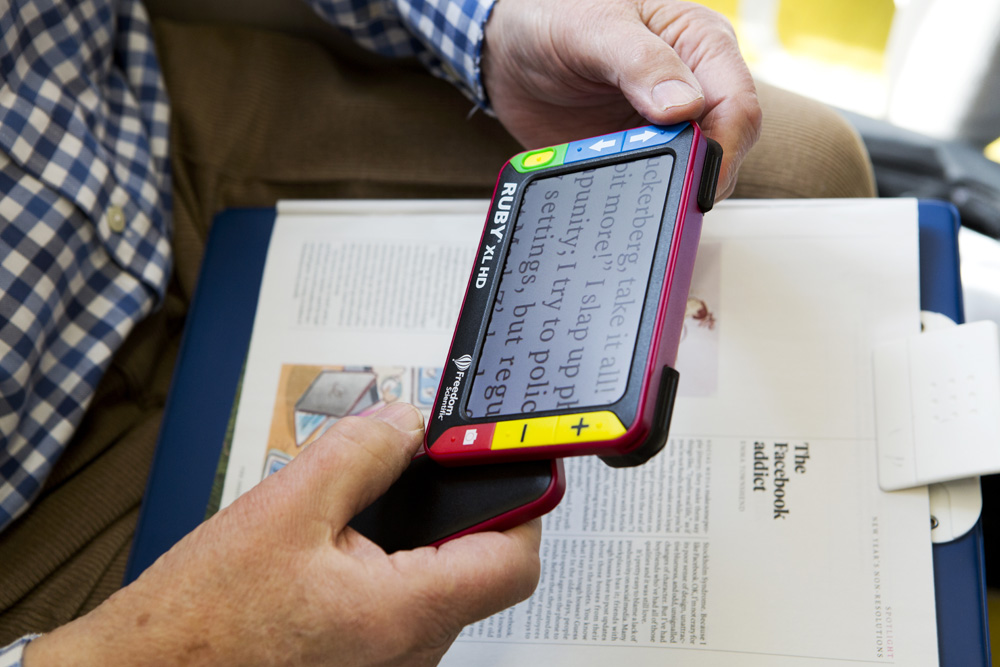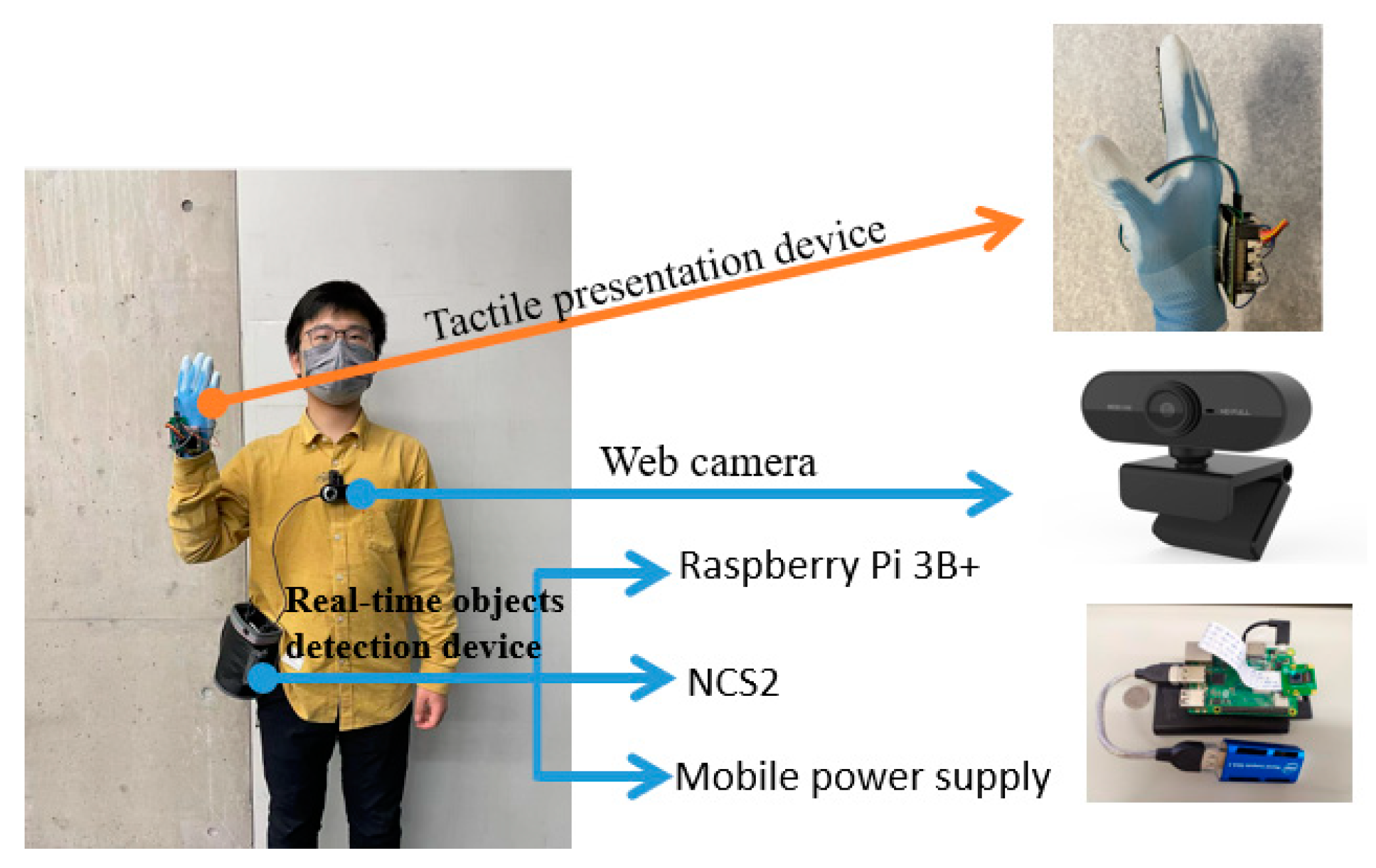AI-Powered Visual Aids: Enhancing Self-Reliance for Blind Users
AI-Powered Visual Aids: Enhancing Self-Reliance for Blind Users
Blog Article
Empowering Self-reliance With Assistive Technology for the Blind
The integration of assistive modern technology right into the lives of individuals with visual disabilities represents a considerable improvement in advertising independence and self-sufficiency. From cutting-edge screen readers to sophisticated clever canes, these devices not just improve everyday navigation and communication however likewise equip individuals to engage meaningfully in different aspects of life. As we explore the myriad advantages and real-world applications of these modern technologies, it becomes important to check out the hidden aspects that add to their effectiveness and the capacity for future growths in this essential field.
Overview of Assistive Modern Technology

The growth of assistive modern technology is grounded in principles of inclusivity and empowerment. Developments in software, hardware, and sensory improvements offer users with choices customized to their specific needs. From display viewers that transform text to speech, to responsive devices that communicate info via touch, these tools transform the method people engage with their environments.
Along with sensible applications, assistive technology fosters higher social inclusion and involvement in different fields, including education and learning and work (Assistive technology for the blind). As r & d remain to advance, the possibility for assistive technology to further improve the lives of visually impaired individuals continues to be encouraging, leading the way for an extra fair culture where everybody can flourish
Kinds of Assistive Tools
A range of assistive tools have arised to sustain individuals with aesthetic problems, each made to meet certain needs and boost daily performance. These devices range from low-tech solutions to sophisticated technologies, giving diverse options for users.
Low-tech tools consist of magnifiers and large-print products that aid in analysis and writing. Braille tools, such as Braille slates and styluses, make it possible for tactile analysis and interaction. Alignment and wheelchair help, like white walking sticks, aid individuals navigate their atmosphere securely.
On the greater end of the spectrum, digital zoom systems and screen visitors offer significant assistance. Electronic magnifiers permit individuals to expand text and photos on screens, while screen readers transform electronic content right into synthesized speech, assisting in access to details on smart devices and computers.
Mobile phone applications likewise play a crucial duty, providing functions like text recognition and navigation support. Wearable innovation, such as clever glasses outfitted with augmented truth, is becoming a promising device to improve situational understanding.
Advantages of Assistive Modern Technology
The combination of assistive modern technology considerably boosts the lifestyle for individuals with visual disabilities. These modern technologies empower users by advertising self-reliance, enabling them to navigate their environments better and perform everyday tasks with greater simplicity. Display visitors and magnification software allow people to important site gain access to electronic details, cultivating specialist and academic possibilities that might have formerly been out of reach.
In addition, assistive tools such as smart canes and general practitioners applications provide real-time navigating assistance, improving movement and security. This enhanced autonomy not only enhances self-esteem yet additionally urges social engagement, permitting users to participate even more fully in their areas.
Assistive modern technology also facilitates interaction, aiding users connect with others through voice acknowledgment and text-to-speech applications. This capability is essential for keeping connections and accessing vital info.
Additionally, the personalization options readily available with several assistive technologies ensure that users can customize gadgets to their details needs, further boosting functionality and performance. In general, the benefits of assistive modern technology for people with aesthetic disabilities are extensive, advertising a much more comprehensive society important site where every person can seek their ambitions and objectives.
Case Studies and Success Stories
Highlighting the transformative effect of assistive innovation, many situation research studies highlight how people with visual problems have actually efficiently incorporated these tools into their every day lives. One compelling example involves a college student who utilized screen analysis software to navigate online sources and scholastic materials effectively. This innovation not only facilitated her education and learning however likewise boosted her confidence in taking part in discussions and team projects.
An additional situation study features an expert who employs a smart device application created for navigating and object acknowledgment. By using this application, he has actually gained back freedom in both his individual and workplace, allowing him to commute individually and engage with associates better.
Furthermore, a retiree shared her experience with braille e-readers, which enabled her to access a substantial range of literary works and stay gotten in touch with her area with book clubs.
These success stories underscore the important duty of assistive modern technology in promoting independence, enhancing top quality of life, and promoting social assimilation for individuals with aesthetic disabilities (OCR devices for the blind). By embracing these cutting-edge tools, individuals can get over difficulties and take possibilities that add to their expert and individual fulfillment

Future Trends in Assistive Technology
Innovation in assistive innovation is positioned to redefine the landscape of support for individuals with visual impairments. Arising trends stress the assimilation of man-made intelligence (AI) and artificial intelligence, which improve the performance of gadgets that help with navigating and info accessibility. AI-driven applications are currently qualified of analyzing visual information in real-time, making it possible for individuals to involve with their setting extra independently.
Additionally, the growth of wearable modern technology is advancing rapidly. Smart glasses equipped with augmented reality (AR) can offer audio descriptions of surroundings, changing how users interact with public areas. These gadgets not only promote autonomy but also foster social incorporation.
In Addition, the Web of Things (IoT) is making homes smarter, enabling for smooth connectivity in between day-to-day devices and assistive devices. This connection encourages individuals by making it possible for voice-activated controls and automated actions customized to private needs.
Conclusion
To conclude, assistive innovation plays a crucial role in empowering individuals with aesthetic disabilities by enhancing their freedom and engagement with their environments. The varied variety of devices and applications readily available not only assists in navigating and communication but also advertises social combination and chances for expert and personal development. As improvements continue in this area, the potential for enhancing the high quality of life for those with aesthetic disabilities will broaden, promoting better autonomy and empowerment.

Report this page